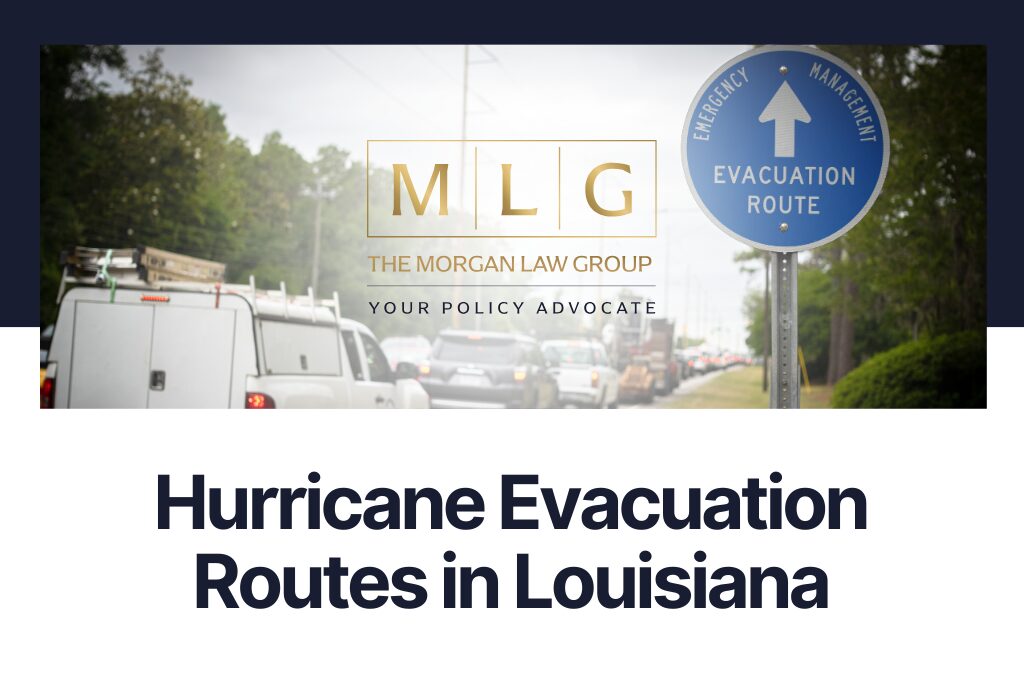Louisiana’s geographic proximity to the Gulf Coast makes it highly susceptible to hurricanes. Historically, Louisiana has been hit by some of the most devastating hurricanes, including Hurricane Katrina in 2005 and Hurricane Laura in 2020. These storms have highlighted the state’s susceptibility to high winds, heavy rainfall, and especially storm surges, which can lead to catastrophic flooding.
Louisiana has a well-structured evacuation protocol, especially in vulnerable areas like New Orleans and Baton Rouge. Residents are advised to familiarize themselves with their nearest evacuation routes, which are clearly marked by signage and supported by local government websites and resources.
Importance of Knowing When to Evacuate
The right moment to evacuate is a critical aspect of hurricane preparedness. Making the decision to leave before the situation becomes dire can significantly affect your safety and ease of travel. Timing your evacuation is crucial as it directly impacts not only your ability to reach safety but also the overall effectiveness of the evacuation process.
- Life Safety: Hurricanes can escalate quickly, leaving residents little time to make decisions. Familiarity with evacuation routes ensures that individuals and families can move swiftly to safety, avoiding areas prone to flooding or structural damage.
- Efficient Movement: During a hurricane, the efficiency of an evacuation can mean the difference between a safe departure and a dangerous delay. Established evacuation routes are designed to facilitate the orderly movement of large numbers of people out of harm’s way.
- Minimizing Traffic Congestion: Proper knowledge of multiple evacuation routes helps distribute traffic more evenly during mass evacuations. This distribution can prevent bottlenecks and gridlocks, which are common when large populations are directed through limited exits.
Understanding the state’s risk for hurricanes and knowing the designated evacuation routes are crucial for ensuring personal and community safety. Always remember, preparedness starts with awareness – ensure you know your way to safety.
Key Routes for Hurricane Evacuation
Hurricane evacuation routes in Louisiana are designed to facilitate rapid and safe movement away from the threat zones. For residents in Louisiana, knowing the key hurricane evacuation routes is essential. The state has designated several major highways as primary evacuation routes.
Key routes include:
- Interstate 10 (I-10): This major east-west highway spans the entire state, offering exit routes toward Texas in the west and Mississippi in the east.
- Interstate 12 (I-12): Serving southeastern Louisiana, this route runs parallel to I-10 but bypasses New Orleans, connecting Baton Rouge to Slidell.
- Interstate 49 (I-49): Running north-south through central Louisiana, this route connects Lafayette to Shreveport, providing a pathway northward from the Gulf Coast.
- US Highway 90 (US 90): These provide additional east-west and evacuation options, running parallel to I-10 and from New Orleans north to Baton Rouge, respectively.
- Louisiana Highway 1 (LA 1): This coastal route moves north-south along the coast, crucial for evacuations from the most vulnerable coastal areas.
The Louisiana Department of Transportation activates specific plans for these routes when slow-moving Category 3, and all Category 4 and 5 hurricanes threaten the area. This includes potentially setting up Contraflow on interstates, which reverses traffic to facilitate outbound flow.
Louisiana Evacuation Orders – Contraflow Plan
When a hurricane approaches, Louisiana implements specific evacuation orders to ensure resident safety. These are categorized into two types: voluntary and mandatory evacuation.
A voluntary evacuation is advised when a hurricane poses a potential threat. Residents are encouraged, but not required, to leave for safer areas to avoid possible dangers. This allows those with special needs or those who wish to avoid the rush of a mandatory evacuation to relocate at their discretion.
A mandatory evacuation order is issued when a hurricane’s impact is deemed unavoidably severe. In these cases, residents must leave their homes to avoid life-threatening conditions.
An integral part of this process is the state’s “Contraflow Plan,” which goes into effect during a mandatory evacuation. This plan reverses the traffic flow on certain evacuation routes, allowing all lanes to lead away from the coast. The Contraflow Plan is activated based on the hurricane’s path and intensity, facilitating quicker and safer departures for residents across affected areas.
For instance, on Interstate 10 and Interstate 49, traffic might be directed entirely eastward or northward away from the affected regions, beginning several hours before the arrival of tropical storm force winds. This allows for the smooth and organized movement of a large number of evacuees.
You Should Not Wait for the Contraflow Plan
Waiting for the activation of the Contraflow Plan to start evacuating can significantly complicate your departure during a hurricane.
Here are key reasons why relying on this as a cue to start evacuating is risky:
- Increased Traffic Congestion: Once contraflow is activated, it indicates that a large number of residents are simultaneously attempting to evacuate. This leads to heavy traffic congestion, which can significantly delay your travel.
- Worsening Weather Conditions: Contraflow is typically implemented when a hurricane is very close to making landfall. Waiting until this point can mean evacuating under dangerous weather conditions
- Decreased Availability of Resources: By the time contraflow is activated, resources such as fuel, food, and emergency supplies may become scarce. Gas stations and stores along evacuation routes might be overwhelmed or depleted.
Therefore, it is advisable to plan your hurricane evacuation well in advance of contraflow activation. Monitoring hurricane forecasts regularly, understanding the local evacuation protocols, and preparing an evacuation kit are all steps that contribute to a safer evacuation process.

